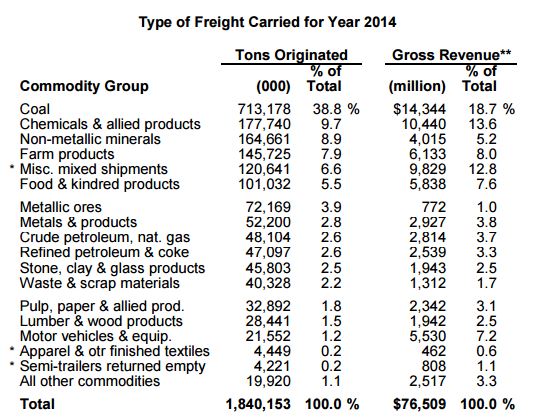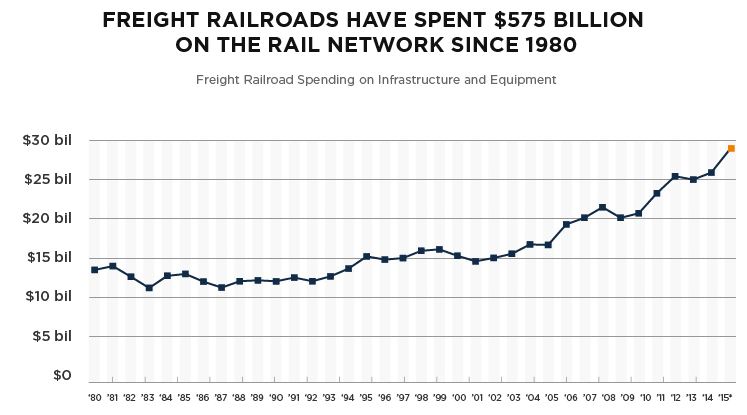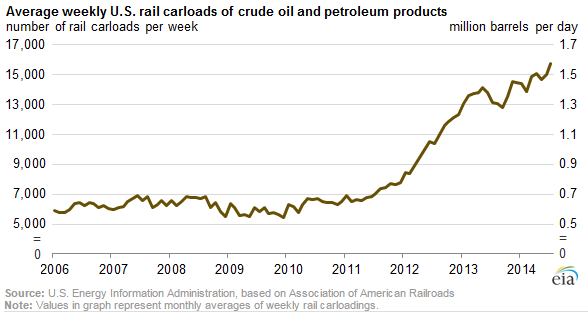Stock prices have finally entered the much anticipated correction, and so I’ve spent more time lately looking at my watchlist of great businesses that I’d like to own at some point. My portfolio has been largely made up of special situation investments for some time, and although I don’t really have a preference when it comes to value (I’m just looking for the most mispriced investments relative to risk), I’ve always liked the compounders. These types of businesses do a lot of the work for you, and at the right price they can be sized very large as often their quality provides a margin of safety.
That said, I only think great businesses make great investments at great prices, and at least by the looks of my watchlist, it doesn’t appear that we are generally to a market level where great prices can be had yet. Although prices have come down, they could certainly fall much further (and will have to before there are numerous quality businesses at prices that I would really get excited about). So for now, I continue to look under the rocks and in the nooks and crannies for the special situation investments and bargains that are usually present in any market environment. But I have dusted off the “great business” watchlist and may become more interested if (hopefully) stock prices continue their descent.
Coal
“A diamond is a piece of coal that stuck to the job” – Thomas Edison
One business I have spent some time on recently is the coal industry (I’ve been reading about coal for a few different reasons, but not because I’m interested in owning coal stocks—if anything the opposite would be the case).
Despite Thomas Edison’s enthusiastic view of the potential of a diligent, hard-working piece of coal, I’m not sure he would have felt the same way about coal stocks. After spending some time researching the industry and a few specific companies, I’ve come to the conclusion that the aggregate equity across the entire US coal industry could be close to being worthless (so no coal stock is on my great business watchlist). Maybe that’s a bit harsh—a few low cost producers in the lower cost basins will probably see their equity survive, but most will have to restructure. There have been numerous bankruptcy filings already, and I think that trend will continue. Like many commodity businesses, these companies borrowed heavily to expand their plants right as the price of their product was reaching all time highs:
The coal companies leveraged up hugely in 2011 when demand from China—the world’s largest coal consumer—was at an all-time high and metallurgical coal prices were soaring (met coal is a key ingredient in the production of steel). Companies were making huge capital investments to expand capacity in order to meet this growing demand from Chinese steel mills, and since pulling coal out of the ground is a business that often consumes more cash than it throws off, these capital expenditures and expansion projects were financed with massive amounts of new debt.
I’ve found that a simple axiom has helped keep me out of trouble when evaluating companies or investment opportunities:
- Rising Debt + Shrinking Revenues = Bad News for Stockholders
Debt-fueled Acquisitions at the Top of the Market
Not only did companies take on debt to finance “growth” capex, but some began acquiring other businesses based on overly optimistic outlooks for met coal prices and Chinese demand.
In 2011, Walter Energy paid $3.3 billion to buy a large Canadian met coal producer, Alpha Natural Resources spent $6.7 billion for Massey Energy group, and Arch Coal spent $3.4 billion for International Coal Group. Just 4 years later, Walter and Alpha have gone bankrupt, and Arch has found itself in the midst of an interesting bit of game theory between management and the senior and junior bondholders that may result in a “kicking of the can” down the road a year or two, but will almost certainly at some point see the equity wiped out.
So this cycle rhymes with most of the other boom/bust commodity cycles we’ve seen in the past. But with coal, it could be particularly more painful since coal is a commodity—unlike oil, gas or base metals—that likely has already seen its peak demand and could be in a long (but very slow) secular decline. According to the US Energy Information Administration, in April, natural gas topped coal for the first time as the number one source of electrical power generation in the US. This trend might accelerate or slow down based on the price of nat gas, but it does appear to be a trend. 5 years ago, coal-fired power generation was twice the level of nat gas-fired power generation, and now both coal and nat gas have roughly equal share of US power generation.
Adding to the cyclical woes are the regulatory hurdles that the industry currently faces, and will likely continue to face going forward. The US Supreme Court remanded the EPA’s Mercury and Air Toxic Standards on June 29th, which would have cost power plants upwards of $10 billion annually. This was perceived as a victory for the coal industry, but many power plants have already been converting from thermal coal to natural gas in anticipation of regulatory requirements. Who knows what lower courts will decide regarding mercury emissions, but once a plant switches to gas, it’s not going back to coal regardless of price.
But the bankruptcies we’ve seen so far (and likely will continue to see in the next couple years) have more to do with mismanaged balance sheets than regulatory policies or even pricing issues.
Is Trouble Opportunity Here?
Is the pessimism surrounding the coal industry overblown? My own feeling is the pessimism surrounding coal as an energy source might be overblown, as coal is still used to produce nearly a third of the country’s electricity. This might be in terminal decline, but it will decline slowly over decades, not anytime soon. It takes a lot of time and money to convert a power plant from coal to natural gas or some other energy source. That said, many debt-laden coal stocks will go to $0, so while the industry will survive for a long time to come, current stockholders might not.
So has the carnage in coal brought down other businesses with it?
Railroads
One place to look is railroads. The rail stocks have been clobbered over the past couple months (partly due to the recent stock market decline, but mostly due to the market suddenly worrying about lower coal volumes). Coal could be a legitimate concern for the railroads. In 2014 coal accounted for 39% of tonnage shipped and 19% of rail revenues, the single largest driver of revenue for the rails:
I have just started thinking about this and reading about railroads. I don’t have any opinion on the value of rail stocks yet, and maybe this price decline is justified, or maybe it’s simply that rail stocks have been in a huge bull market over the past four years and this pullback is warranted simply from a valuation standpoint.
I’m not sure, but it’s a business that has some qualities that are attractive such as high operating margins, pricing power, and significant barriers to entry. It would be virtually impossible to replicate the rail network that Union Pacific or BNSF have cobbled together over the past century.
It also has certain things that are generally not viewed as positives such as unionized work force and significant capital requirements. The US rail industry will spend an estimated $29 billion in 2015 on maintaining and improving their network, and since deregulation in 1980, the railroads have spent over half a trillion in capex:
Not exactly the “capital light” business than many investors look for… Of course, businesses that soak up sizable chunks of capital can still create significant value if there is an attractive return associated with that capital investment.
Another data point that could be considered positive or negative is the dramatic increase in crude by rail that coincided with the US energy production boom of the past 7 years—specifically the rise of hydraulic fracturing in the Bakken field of North Dakota. In large part thanks to the frackers, crude by rail has nearly tripled since 2008:
This is obviously good for the railroads if it can continue, but this could also be a point of concern if US production begins slowing down due to much lower energy prices. Crude is much less a factor than coal however, at only around 4% of revenue, but when combined with sand and gravel tonnage that is also used in fracking, it becomes a more meaningful revenue contributor.
Of course Buffett famously surprised many people when he bought BNSF back in 2009, a purchase that–despite what he said on Charlie Rose’s show–has provided Berkshire with spectacular returns. One of BNSF’s competitors is Union Pacific, which Buffett said took market share from Berkshire in 2014.
UNP has been clobbered along with the other rail stocks.
Here is a good article on the rail business—UNP specifically—that is worth a read.
It’s been a great decade to be a Union Pacific shareholder as pricing power and operating leverage have combined to triple operating margins from 13% to 37%:
Operating income has increased to $8.7 billion from $1.8 billion in 2004, and the stock price is up 5x, even when factoring in the recent 30% decline.
I think it’s a good business. But I’m not yet sure what to think about some of the fundamental drivers (namely how will declining coal volumes affect the business, and where will margins be in the coming years).
This post is more of just jotting down some notes/thoughts on these businesses. I may begin writing more shorter-form posts on companies I’m researching as a way to share my notes and also get feedback from readers who may have also done some work on things I’m interested in.
So I have no real conclusion other than to say that UNP is one business on my “companies to read about list” that maybe will set up for an opportunity via a double whammy of a pessimistic coal outlook and an increasingly bearish stock market sentiment. We’ll see… Until then, I may begin parlaying some reading on coal into some work on the railroads.
Have a great weekend.





